The Aston Martin Valhalla Is Ready To Show Just How Wild Hybrids Can Be
Aston Martin has revealed the production-ready Valhalla supercar, a 937 horsepower hybrid that uses an all-new tri-motor powertrain. Shaken up from the Valhalla concept thanks to Aston Martin's deal with Mercedes-AMG, its combination of a rear V8 engine and two electric motors delivers not only all-wheel drive when required, but 0-62 mph in 2.5 seconds.
Top speed, Aston Martin says, is 217 mph. While the new Valhalla hasn't made its attempt yet, the automaker says it's expecting a 6:30 minute lap around the legendary Nürburgring Nordschleife.
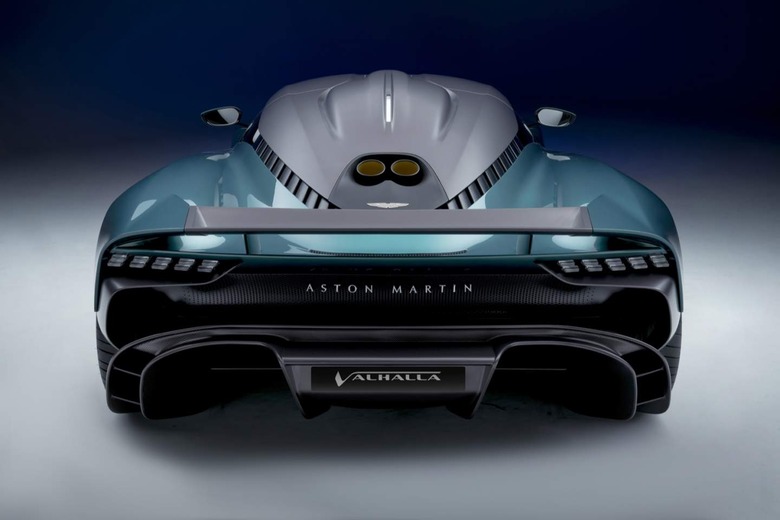
To achieve something like that, you need a potent engine, and while the Valhalla may be a hybrid it's no Prius. On the gas side, there's a 4.0-liter twin-turbo V8 – unsurprisingly contributed by Mercedes-AMG, where we've seen it used to great effect in the AMG GT Black Series – that's rear-mid mounted, with a flat-plane crankshaft for better responsiveness. It'll rev up to 7,200 rpm, Aston Martin says, and drives the rear axle.
It's combined with two electric motors, one at the front axle and one at the rear. It's a 150kW/400V hybrid system with a battery capable of driving the Valhalla at up to 80 mph for around 9 miles on electric power alone. However it's when the EV system works with the V8 that things get interesting.
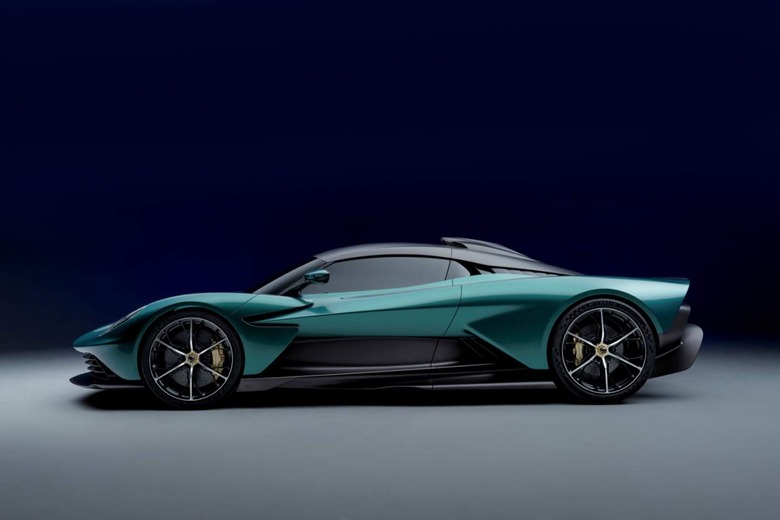
In EV mode, power goes straight to the front axle. In the other driving modes, though, power is split between the front and rear, depending on traction demands. Up to 100-percent of battery power can be pushed to the rear wheels, for example, for maximum performance.
Aston Martin combined the hybrid system with a new 8-speed DCT transmission, with an electronic limited-slip differential on the rear axle. It also uses the electric motors for reversing, saving the weight and complexity of a traditional reverse gear. Unexpectedly, the e-motor and the V8 can actually run on different gears in the DCT, at the same time, for 738 lb-ft of torque.
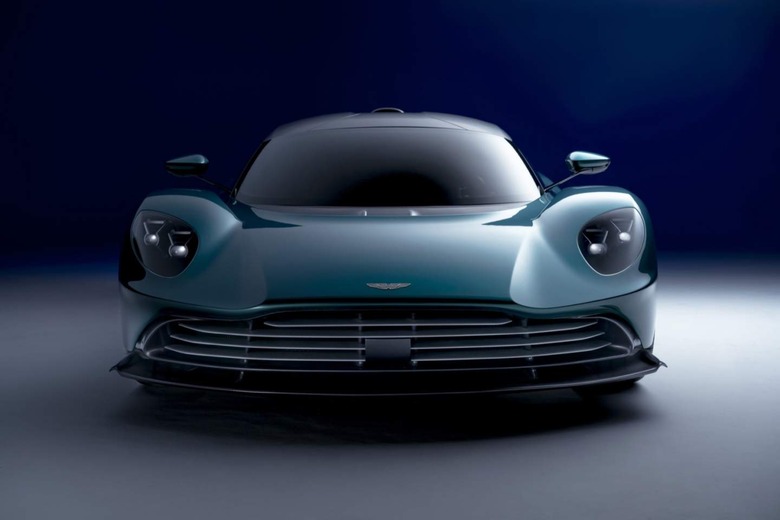
It's all mounted in a carbon fiber tub, with F1-style push rod front suspension equipped with inboard mounted springs and dampers. That, the automaker says, saves both unsprung weight and space. At the rear there's a multilink suspension design, with Multimatic Variable Spring rate and Adaptive Spool Valve (ASV) Damper units for on-the-fly adjustment to stiffness. Switch to Track mode, and the ride height drops; face a steep driveway and the front can lift, helpfully.
Bespoke Michelin tires – 20-inches at the front and 21-inches at the rear – are paired with Carbon Ceramic Matrix brakes with brake-by-wire. The result is a target dry weight of under 3,417 pounds, despite of mixture of active aerodynamics – including the front surfaces and rear wing – and underbody sculpting. At 150 mph, Aston Martin says, there's over 1,320 pounds of downforce.
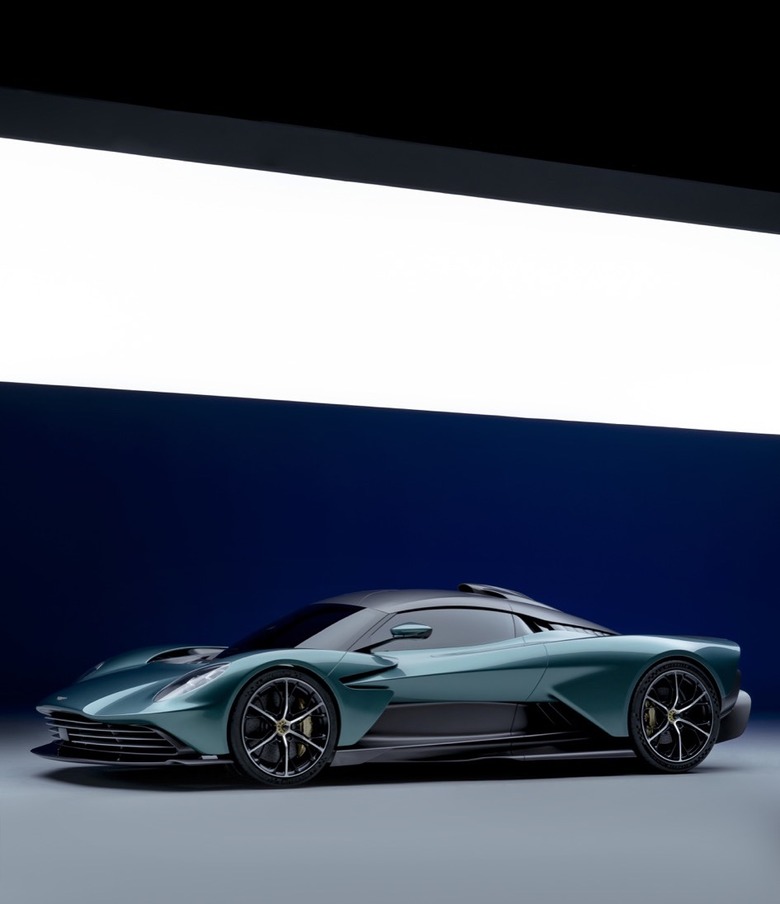
Step in through the front-hinged dihedral doors – complete with a cut-out in the roof to make that process a little more graceful – and, after admiring the roof scoop, you'll find a whole new cabin. Simplified and more spacious than that of the Valkyrie, there's a new infotainment system with a central touchscreen supporting Apple CarPlay and Android Auto. The seats are fixed, but adjustable pedals and steering column allow the driver to tweak things to their preferences.
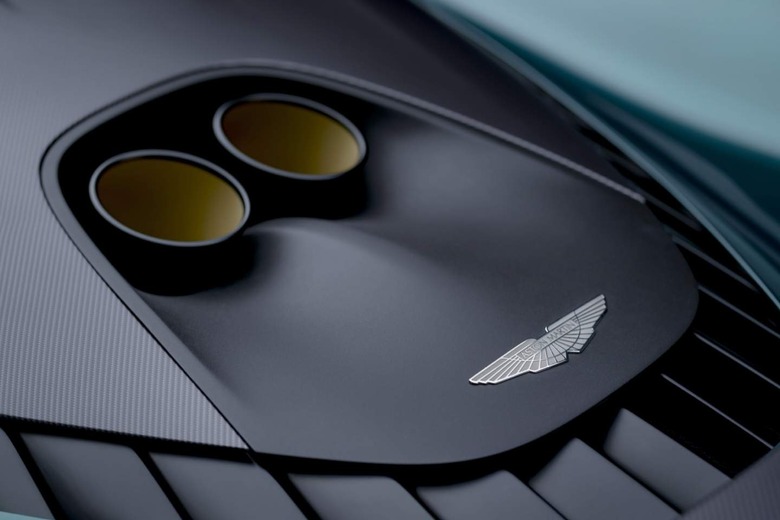
Despite the performance boasts, there's still plenty of comfort and tech. Dual-zone climate control, full LED matrix headlamps, automatic emergency braking, forward collision warnings, and blind spot monitoring are all standard, as is adaptive cruise control. A surround camera is optional, as are the usual customization choices which the Q by Aston Martin division can wield.
As for when you can buy one, and how much it'll set you back, figure on around an $800,000 dent in your pocket. The first Valhalla deliveries are expected to begin from late 2023.
